City Hall, Doubled
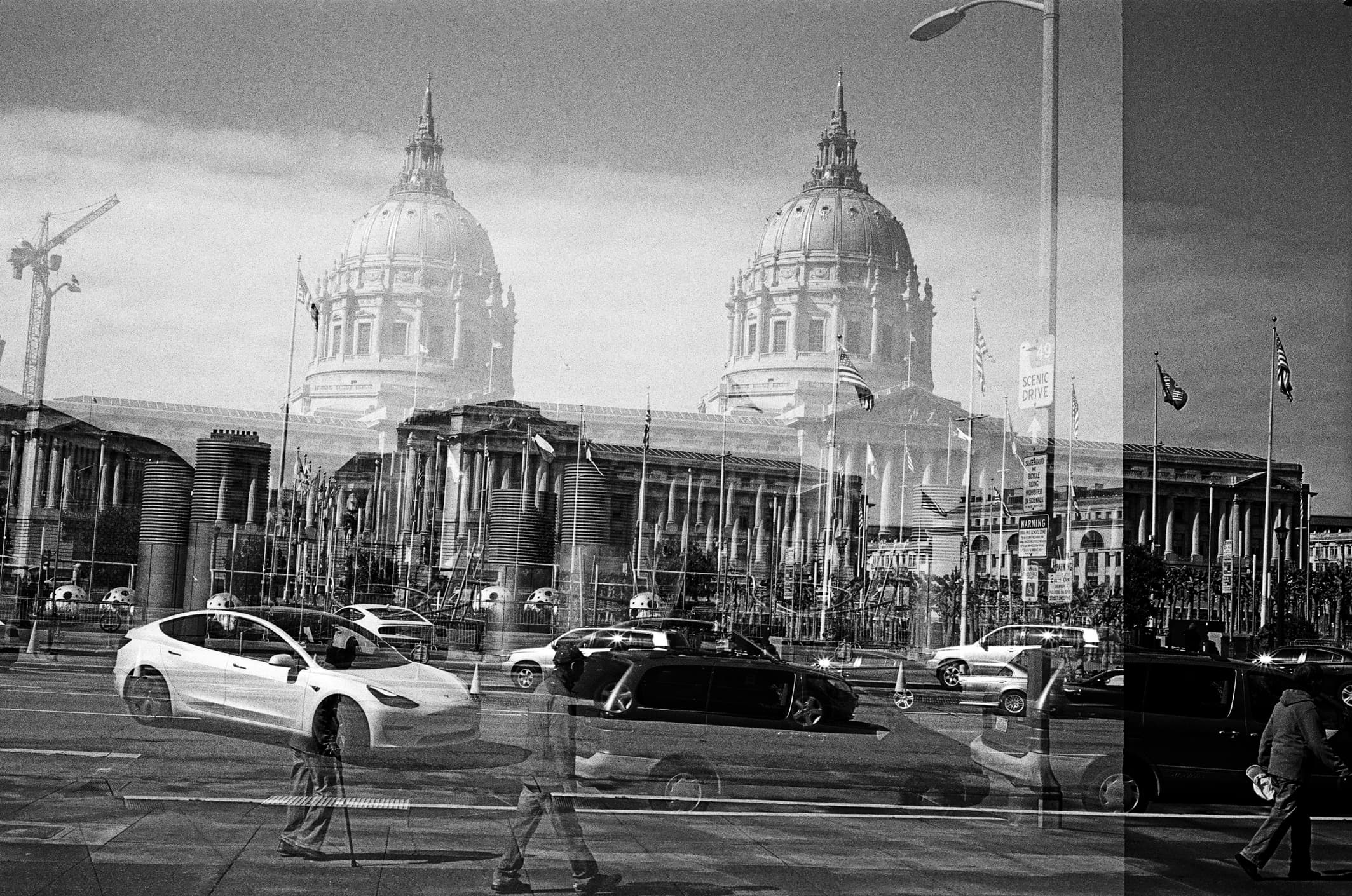
An accidental double exposure of City Hall, San Francisco.

An accidental double exposure of City Hall, San Francisco.
Like so many film photographers outraged by the cost of color film these days, I've thrown myself headlong into the world of shooting stills on motion picture film. Kodak Vision 3 films can be purchased in bulk, spooled into lengths that bulk rollers can use, and then self-rolled into canisters at your own leisure. Instead of the $12-18 per roll abomination of standard color films, you can get motion picture film for $10 a roll if you buy them pre-rolled online, and $5-8 per roll if you do it yourself.
The huge caveat if that you can't just send this film to any film lab. They have a layer of black carbon on the film, known as 'remjet', that requires special handling. While I previously bought and sent my motion picture film to a specialist, I decided that I wanted to learn how to do it myself.
There's very scant information about how to shoot and develop motion picture film. The best information I've found has been this Reddit thread, other comparison threads, and some historical information on Photrio. Like I do in most things, I dove head first into it and made a ton of mistakes. But now I know.
I know, for example, not to use a stiff sponge to remove the remjet at the end. I know now that baking soda alone is not sufficient; borax is better. My darkroom (i.e. my bathroom) is now full of photo chemicals. I have all kinds of bottles and funnels. I'm truly getting into my mess around and find out era, and it's super fun. I discovered I have as much of a passion for the ins and outs of photo developing, scanning and printing as I do for taking photos and telling stories. It's been the important balm for my soul: the art and science of doing something that engages my heart, eyes, hands and soul.
This was from the first roll of Kodak Vision 3 250D that I developed. I used baking soda only in this roll to remove the remjet. Then, I used a stiff sponge to remove the remaining remjet at the end and.. that ended up scratching the negatives. But I'm learning to appreciate that mistakes happen and it's fine and maybe even cool, since it imparts a strong sense of physicality to the digital realm: if you were to look for this negative a hundred years from now, it will still have these scratches. It will be unmistakably something that happened from my own hand, rather than rendered by stable diffusion.
So I will keep shooting motion picture film and keep developing them.
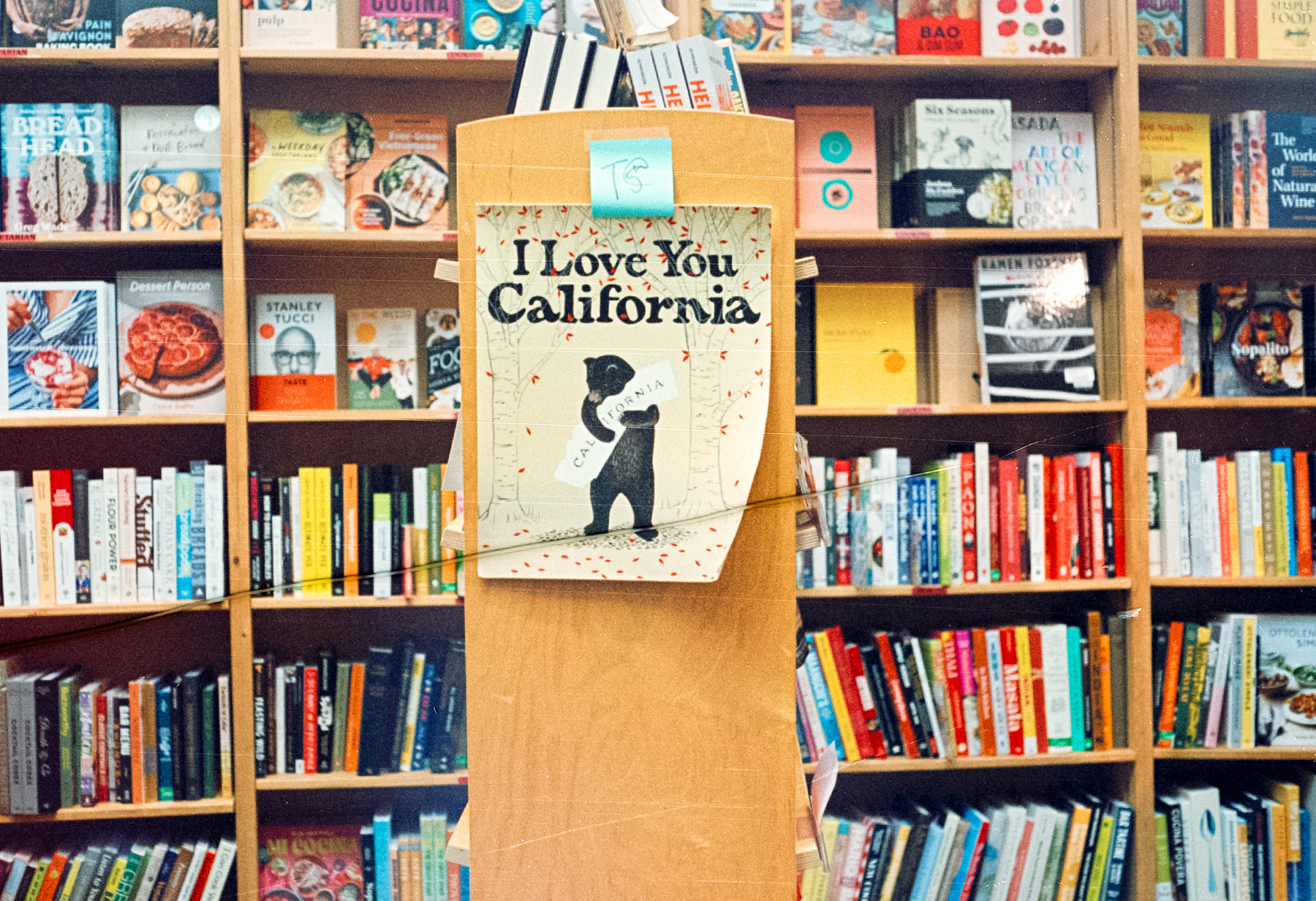
I love you too, California, San Francisco, and Green Apple books.
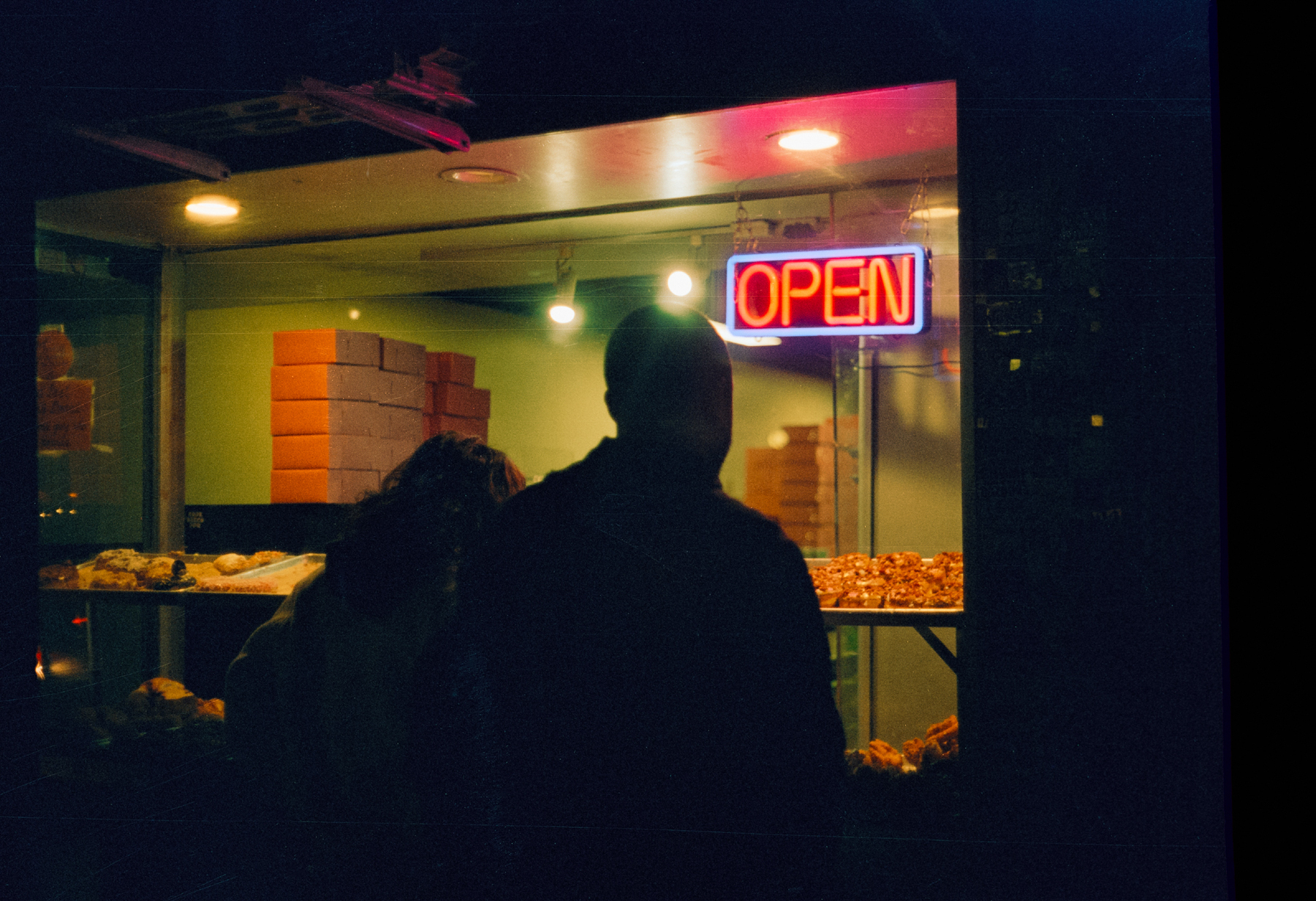
Bob's donuts. A landmark of San Francisco.
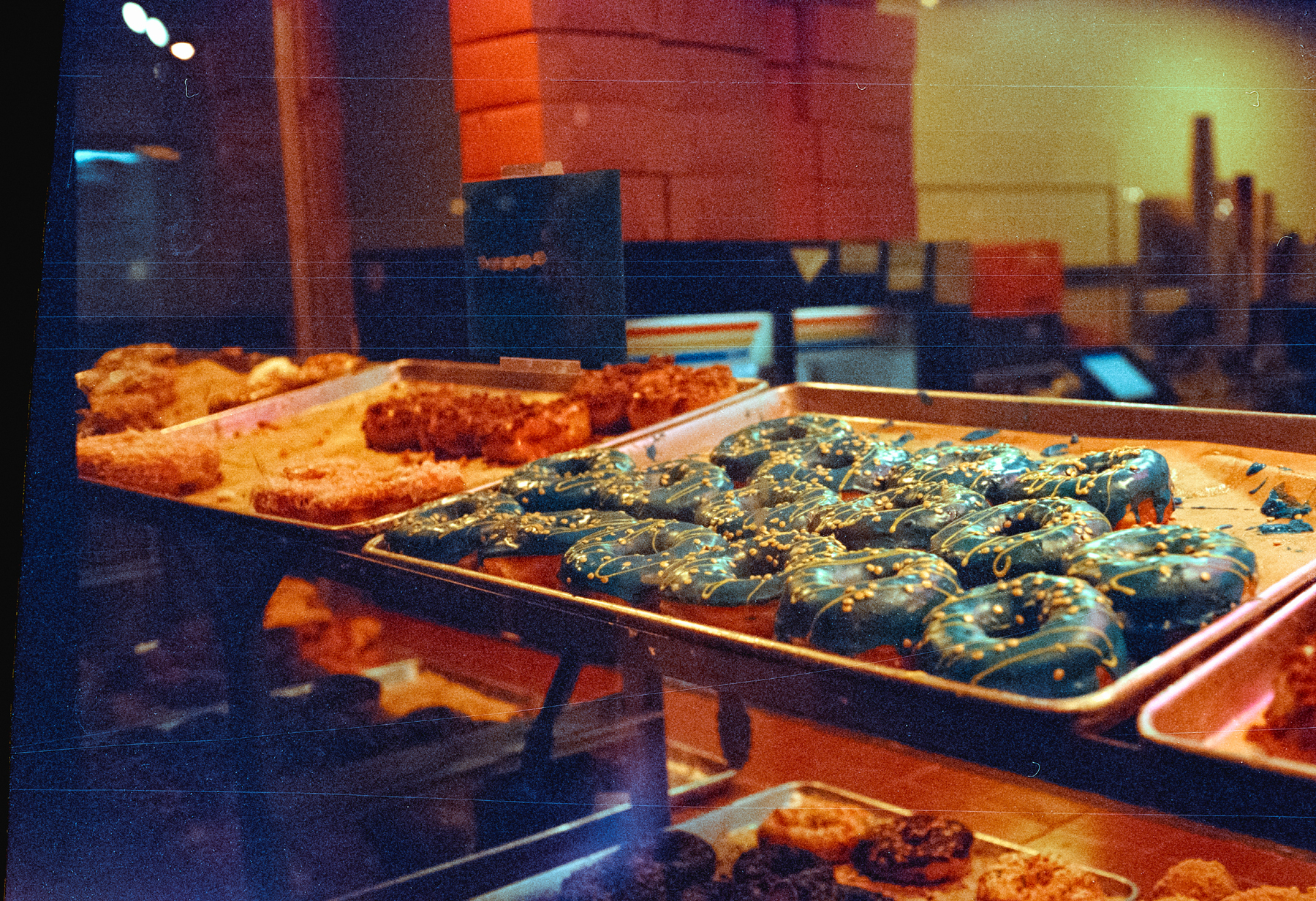
Donuts donuts donuts.
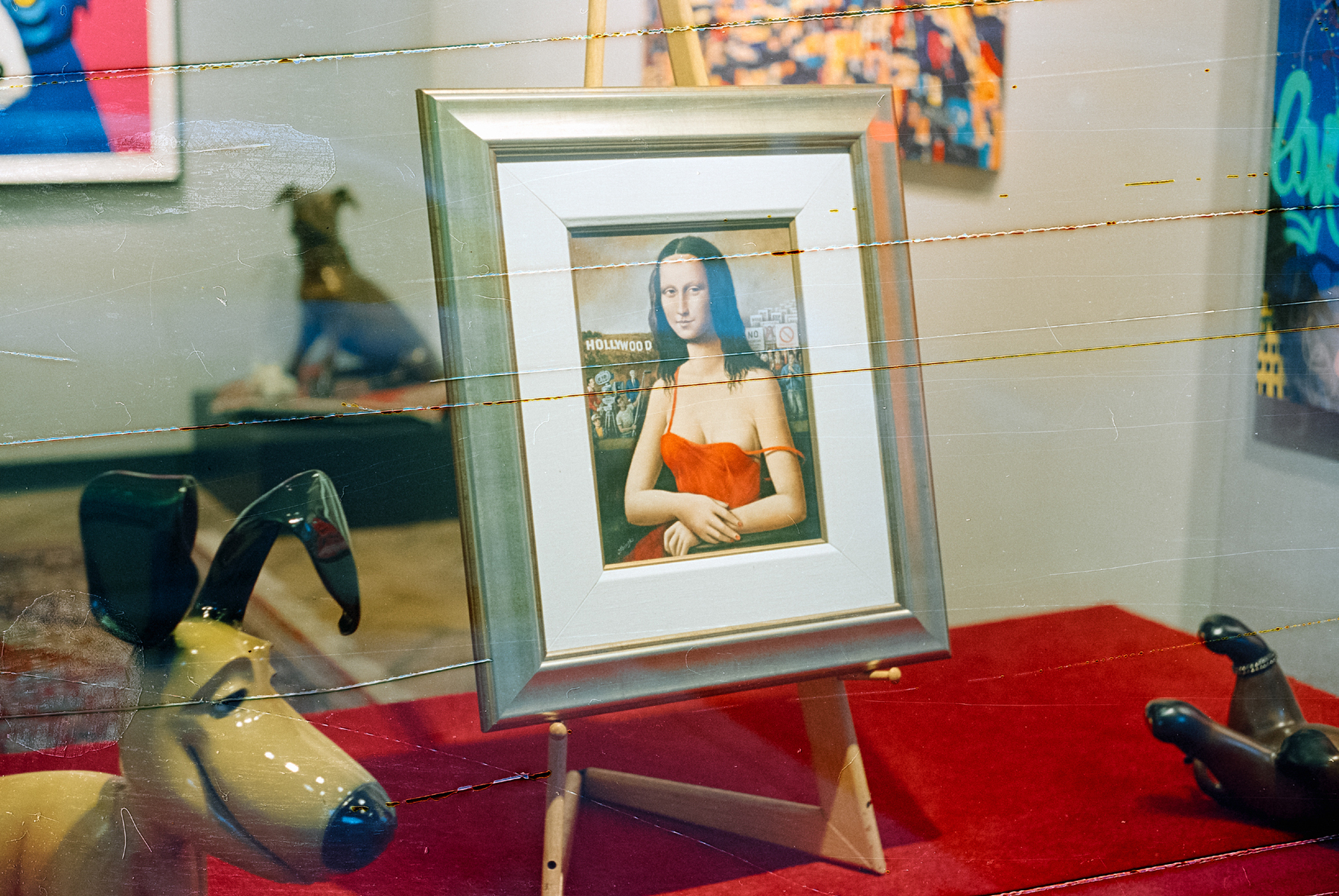
Mona Lisa, modernism, and scratches across the negative.
(All photos taken on Minolta Hi-Matic 7S II with Kodak Vision 3 250D film, self-dev in ECN-2 chemistry and scanned on Plustek 8200i)
One of the interesting things about living near City Hall is I never know what I'm going to walk into. Some days it's a protest about the declining state of trans rights in this country. Or one by the Burmese or Iranian communities to try to raise awareness of the issues at home.
Other days it's an Irish festival that somehow has large representation from law enforcement. (For more information about the impact of the Irish in San Francisco law enforcement, read Season of the Witch.) I had my black and white film camera out, but I also had a roll of Kodak Vision 3 500T film in my rangefinder camera that I got processed and scanned much later.
I was interested in the parade and curious to know how it would proceed in the rain; though like many other observers, I kept a distance from it. I come from a country where protest isn't allowed (except in a very specific park with strict rules requiring pre-approval), so I am always going to be photographing and gawking at any protests, and parades (which also require pre-approval where I come from), I think, even if I might not agree with all of them.
Tomorrow, I'm going to go to a rally for trans rights. It's cool that I can just stroll over to show my support for things like that.
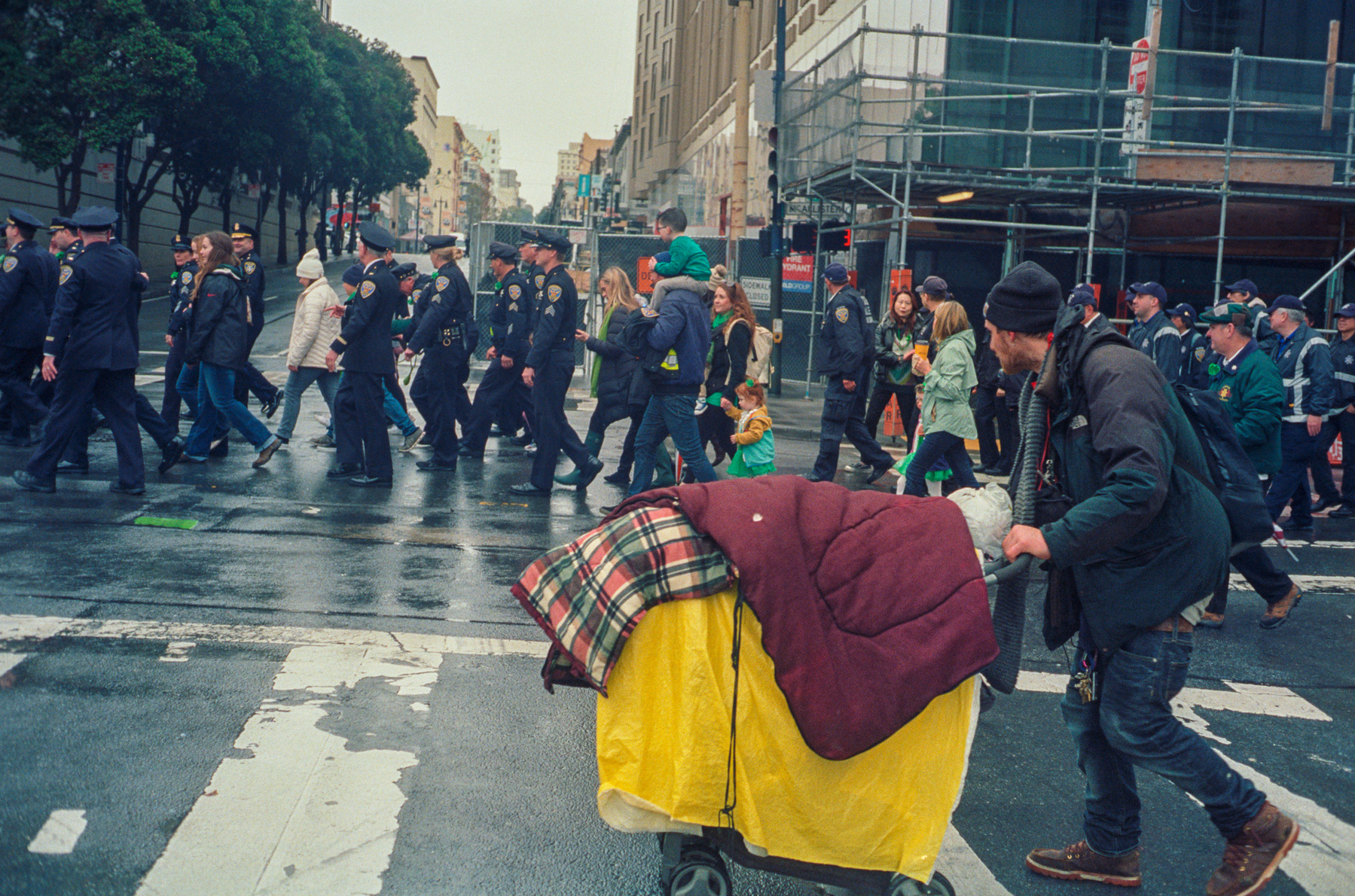
The entire street was closed.
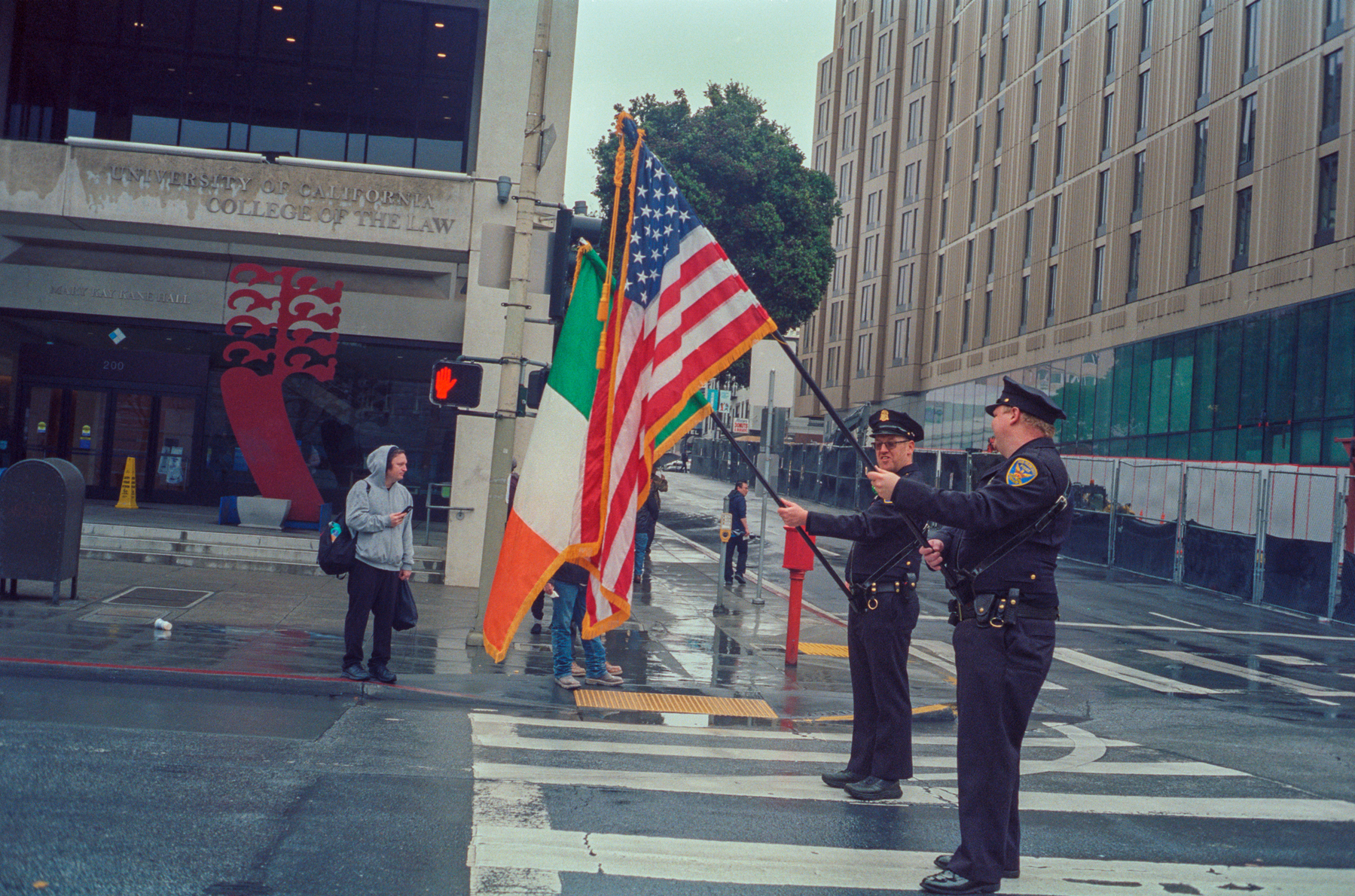
San Francisco is the hub of the Irish diaspora in the West Coast. The police force has also been a favored profession for that community.
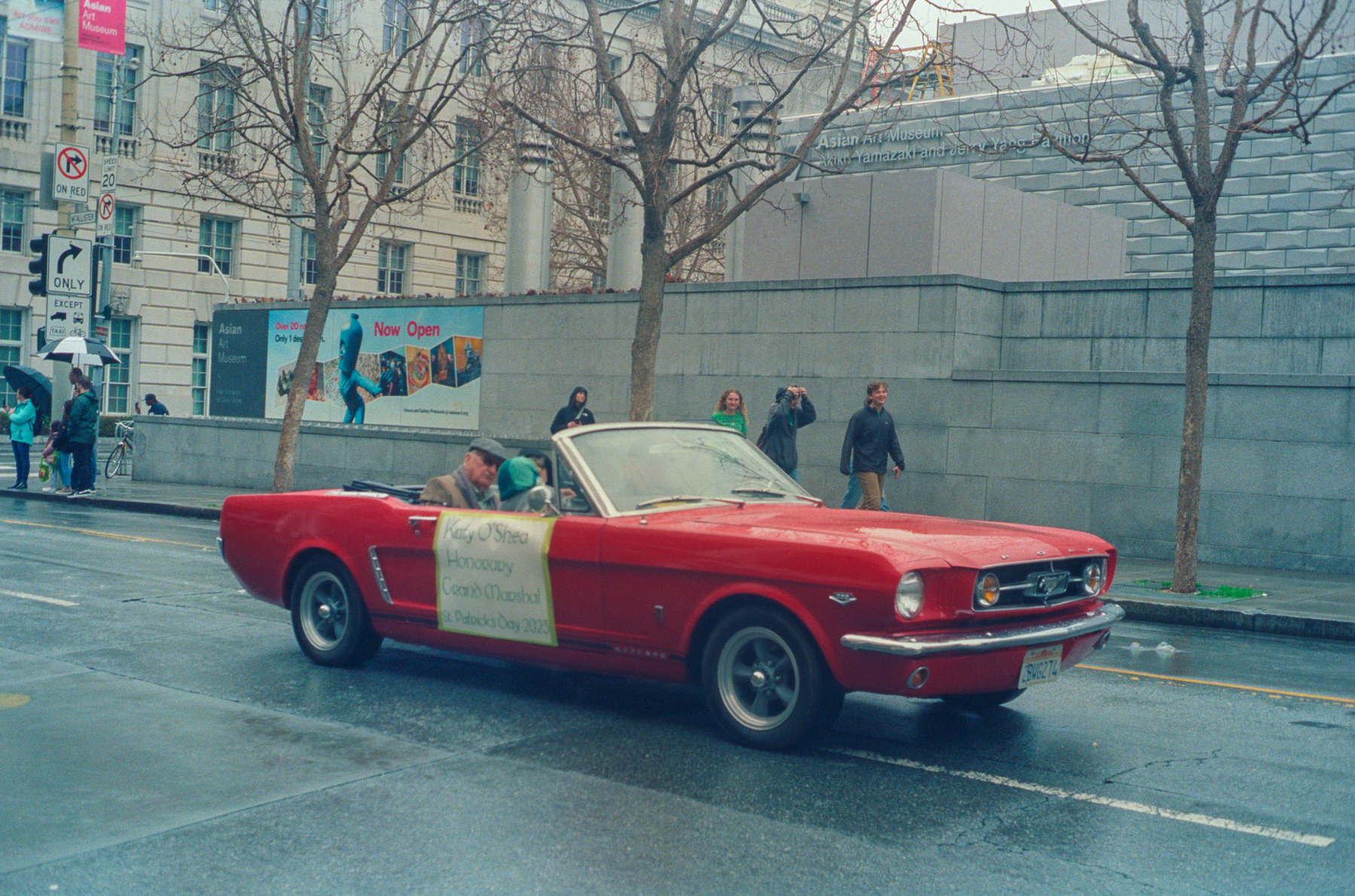
Classic cars are my thing.
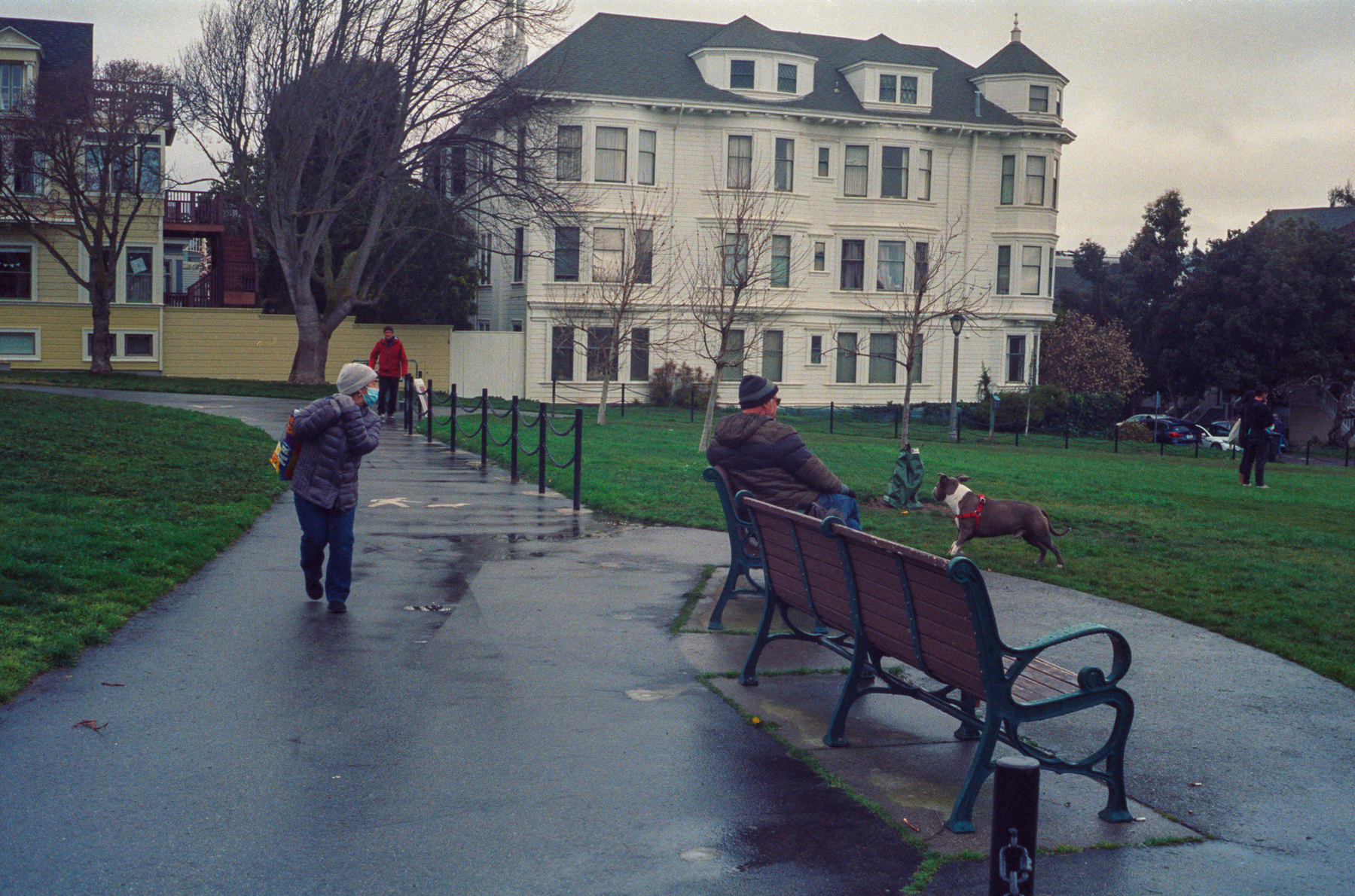
Rainy days are here again.
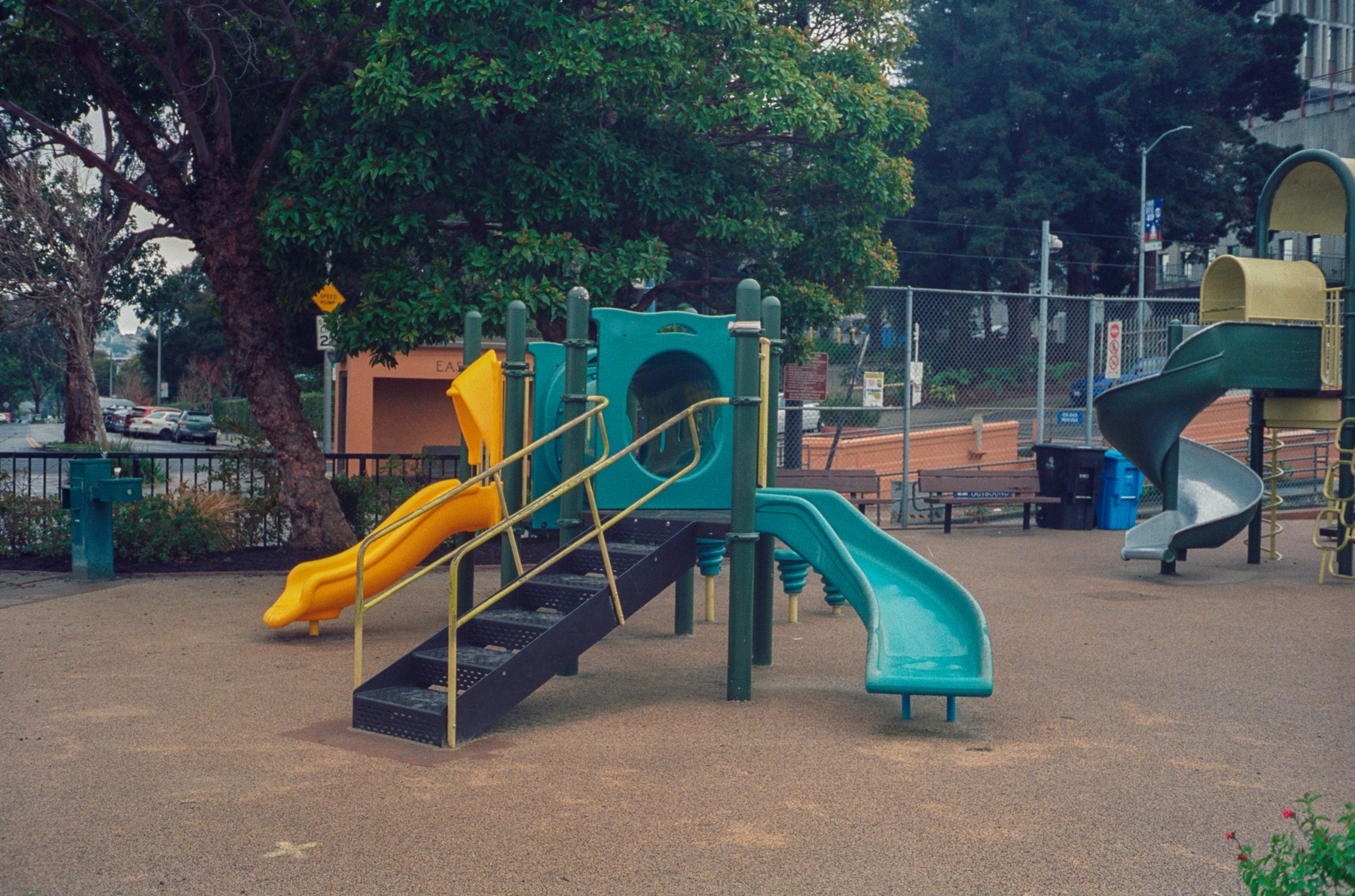
I really like the colors on the motion picture film. This photo would not be as interesting on regular color film!
All photos taken on Minolta Hi-Matic 7S II, with Kodak Vision 3 500T, processed and scanned by Eureka Film Lab.
Recently, I had an opportunity to purchase a few rolls of Kodak Vision 3 500T Film (5219). I was warned that it would be almost too 'cool', that it had tones of blue in most photos unless I used a warming filter, or fixed it in post.
While my style of color photography tends to be vibrant and warm (Portra and Ektar are favorite film stocks), I wanted to try something new.
I went out shooting photos of San Francisco at dusk, and also in the midst of our poor weather (on the days when it rained ceaselessly). I think that if you know its quirks, you can get a lot out of it. I really like this look and am excited to try other motion picture film stock (I have a 50ft roll of Vision 250D film I'm going to bulk roll myself).
Shooting motion picture film is an interesting premise for a film stills photographer: you can buy it in bulk! It's affordable! And has very interesting look and film somewhat reminiscent of many of the movies we know and love (500T was used to shoot parts of Euphoria, among other TV shows and movies). The main downside is that regular labs don't process motion picture film. It has a black layer of 'remjet' at the back that can lead to damage of commercial labs' equipment. What you want to do is look for someone who does ECN-2 developing (there are several), or do it yourself with an ECN-2 kit.
Also, it never fails to amuse me that people think San Francisco is a really modern-looking big city: to me, it's a small town trapped in time, where buildings and entire neighborhoods (except the downtown area) look more or less the same as it did when hippies were running around naked in these areas.
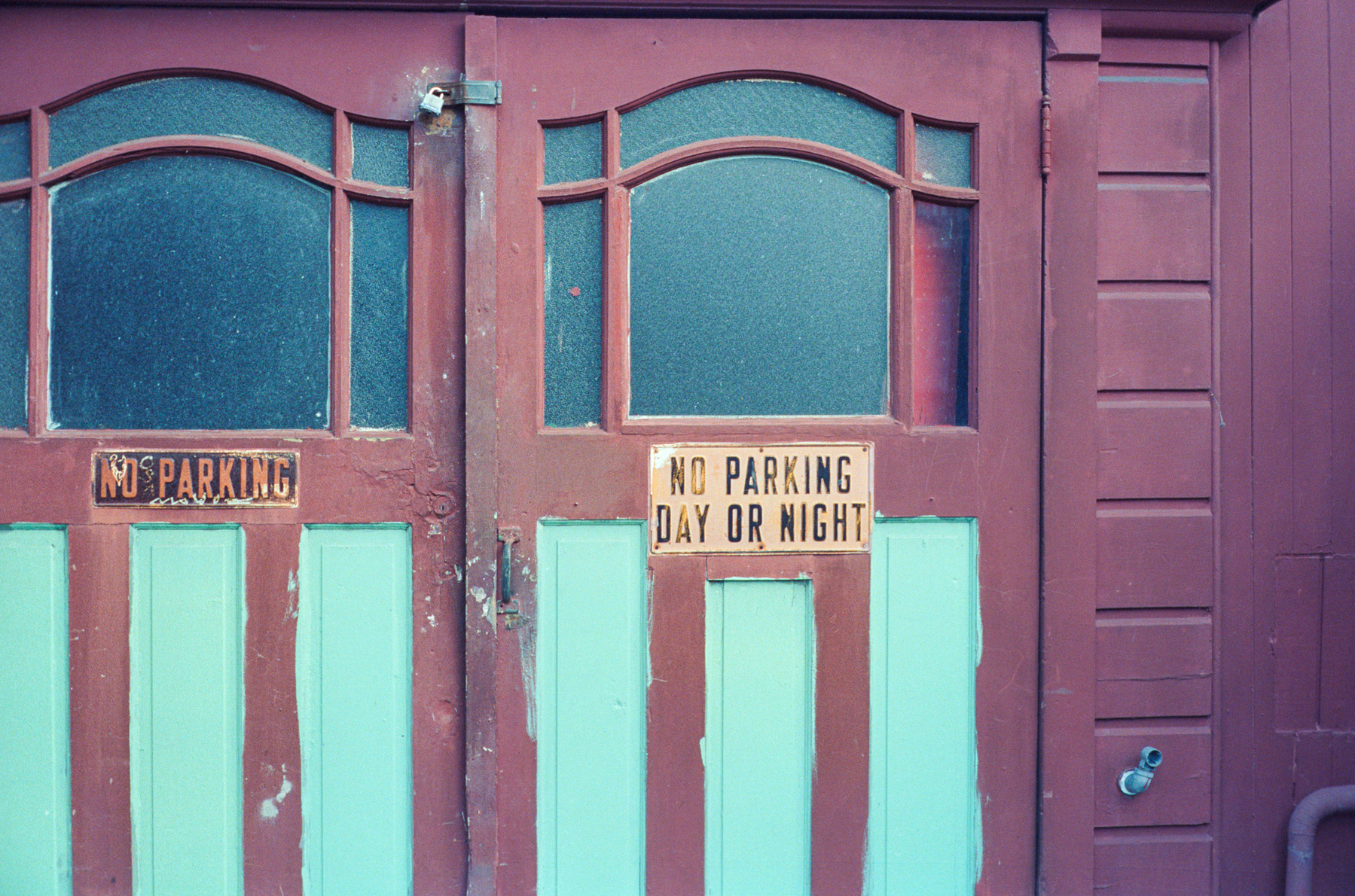
No parking at any time.
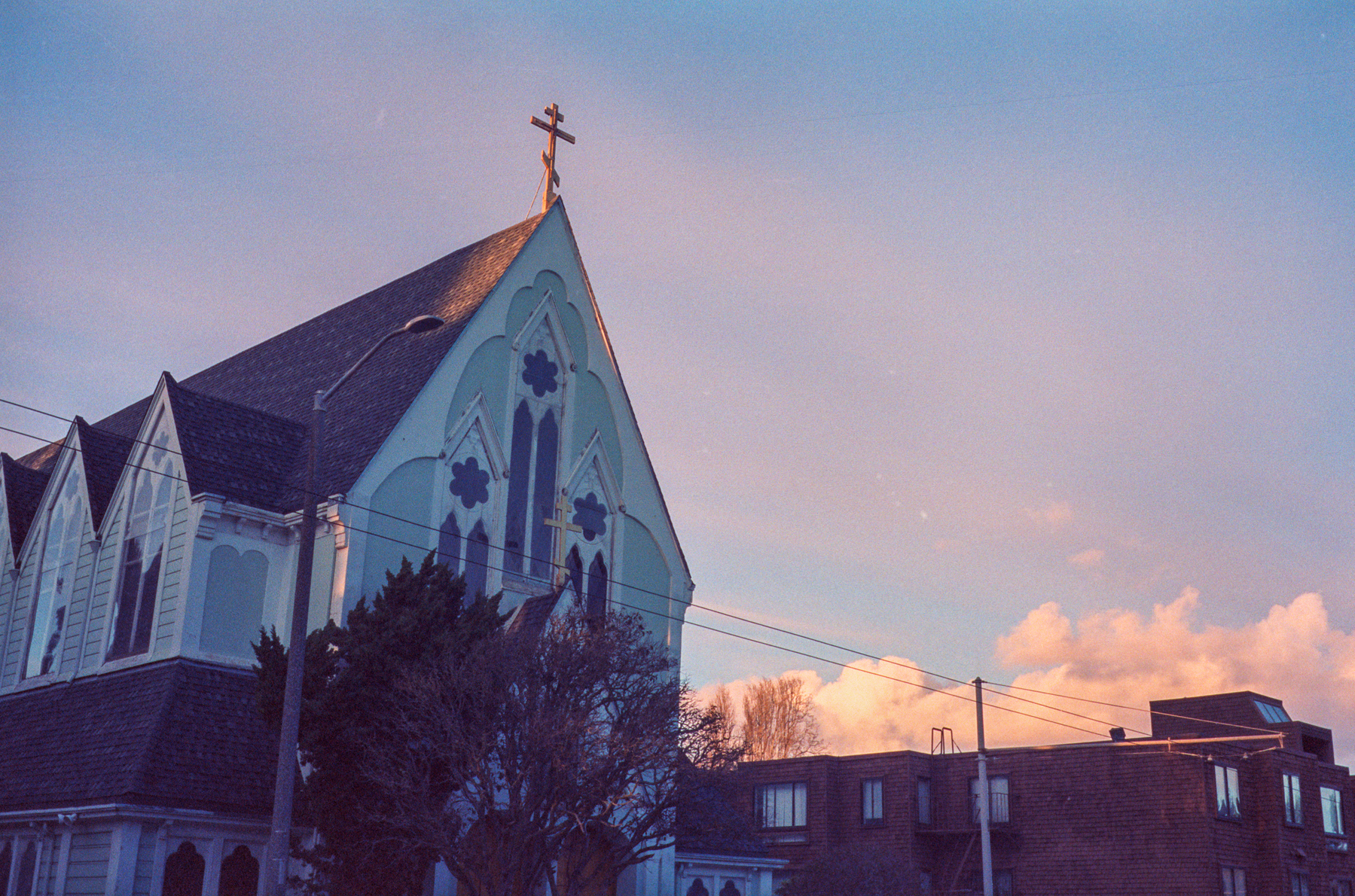
A church in blue and pink and cloud.
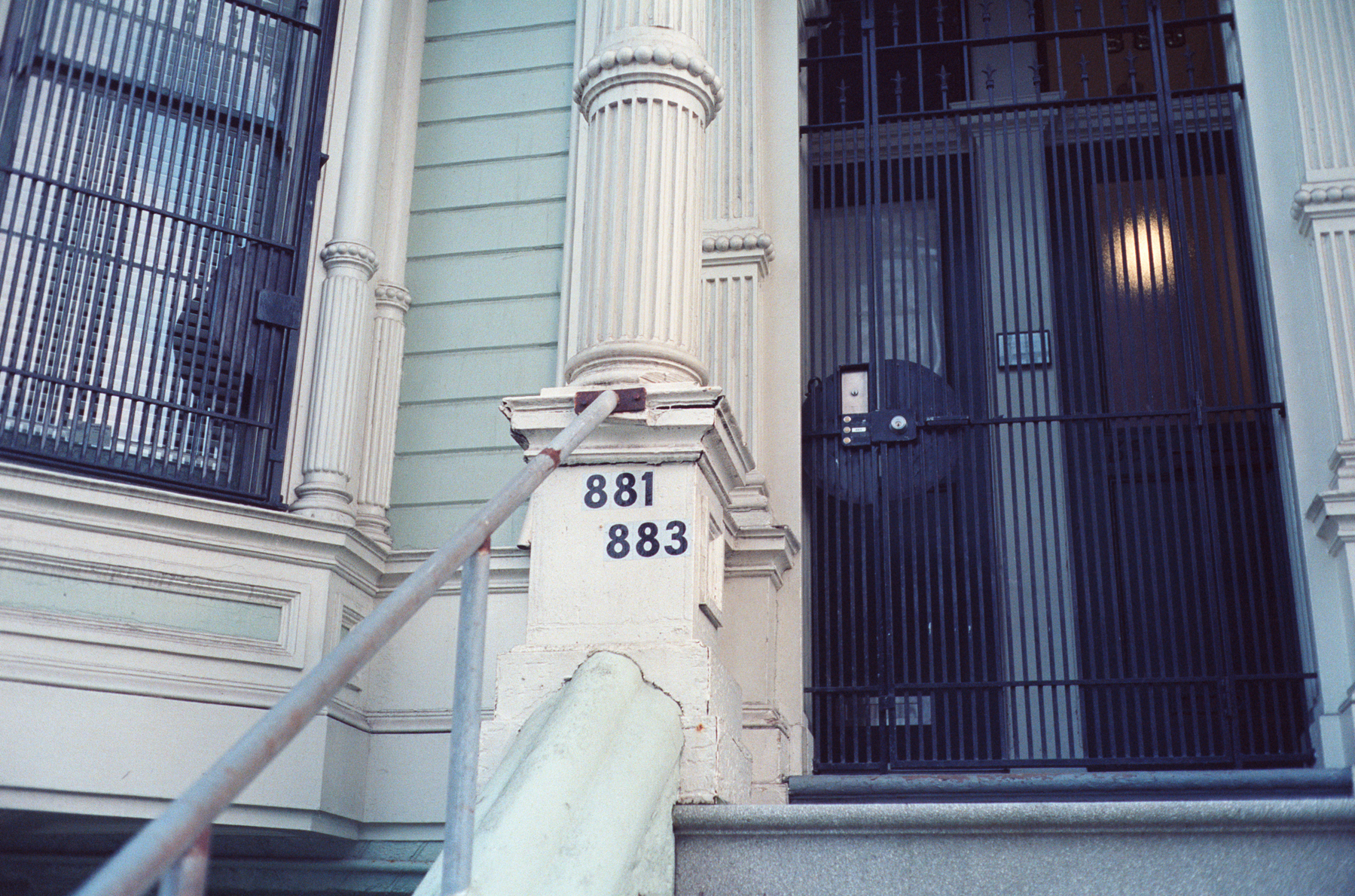
Victorians in this neighborhood seem to like blue and white a lot.
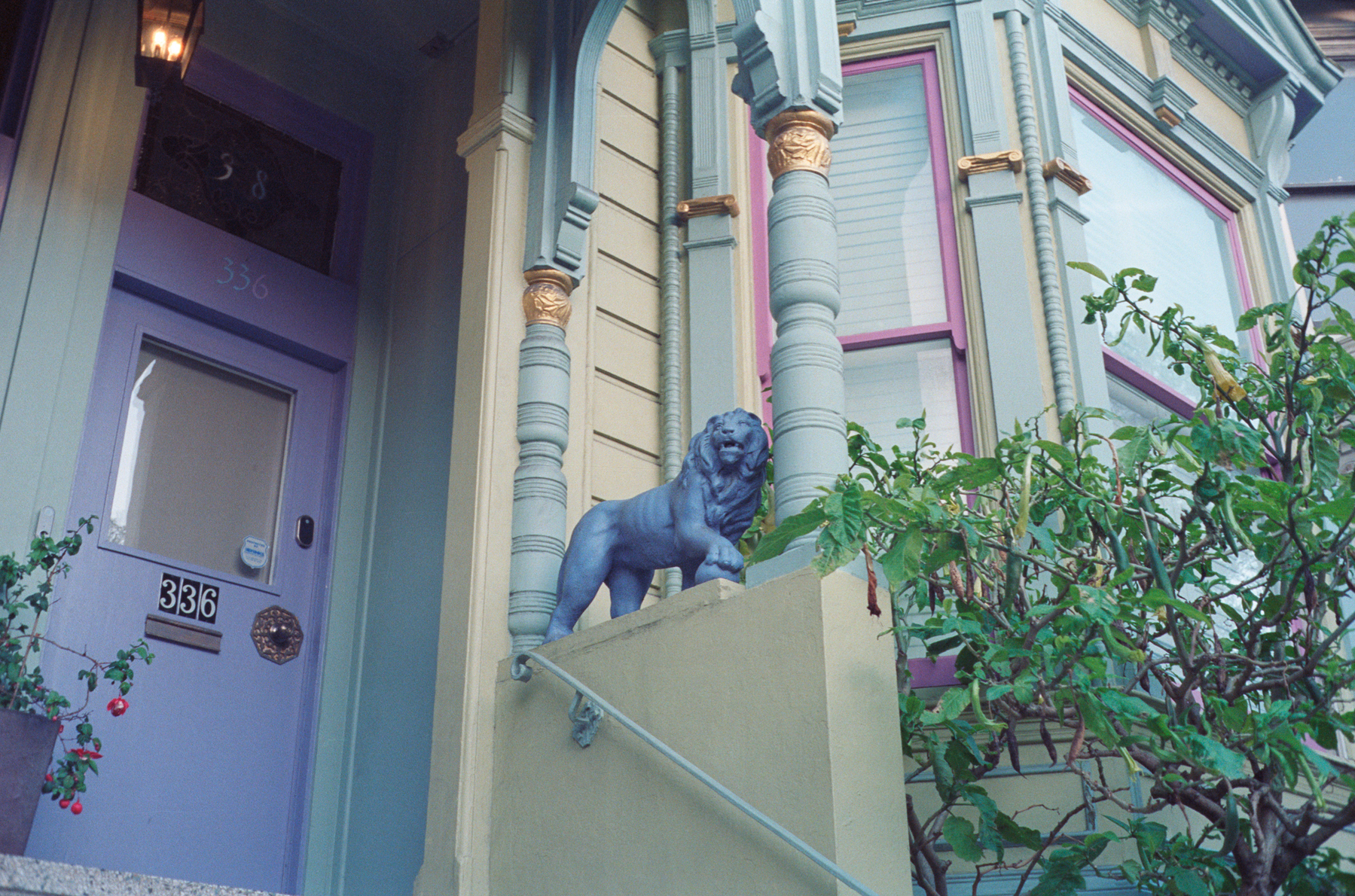
And purple.
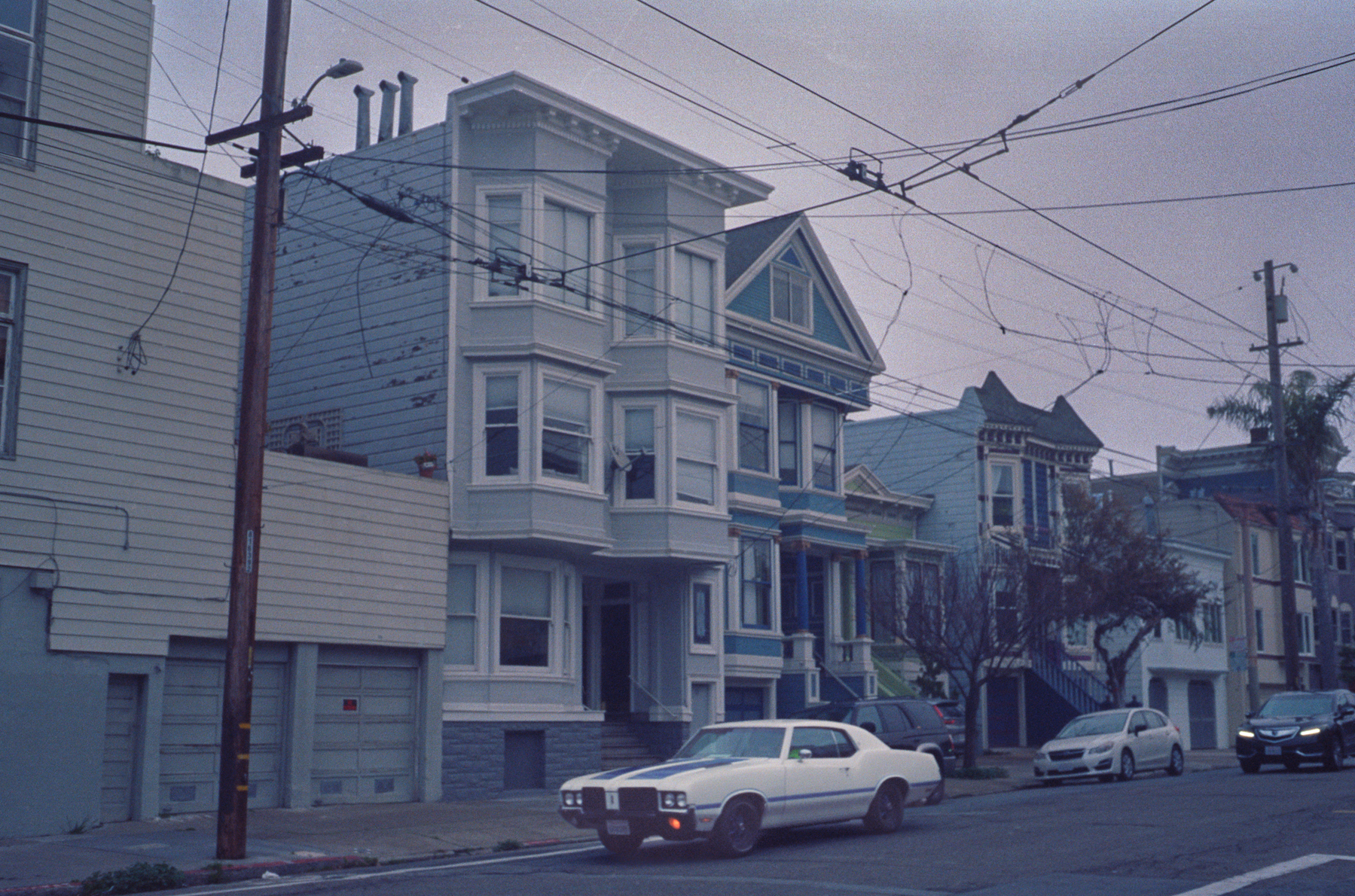
Retro blues.
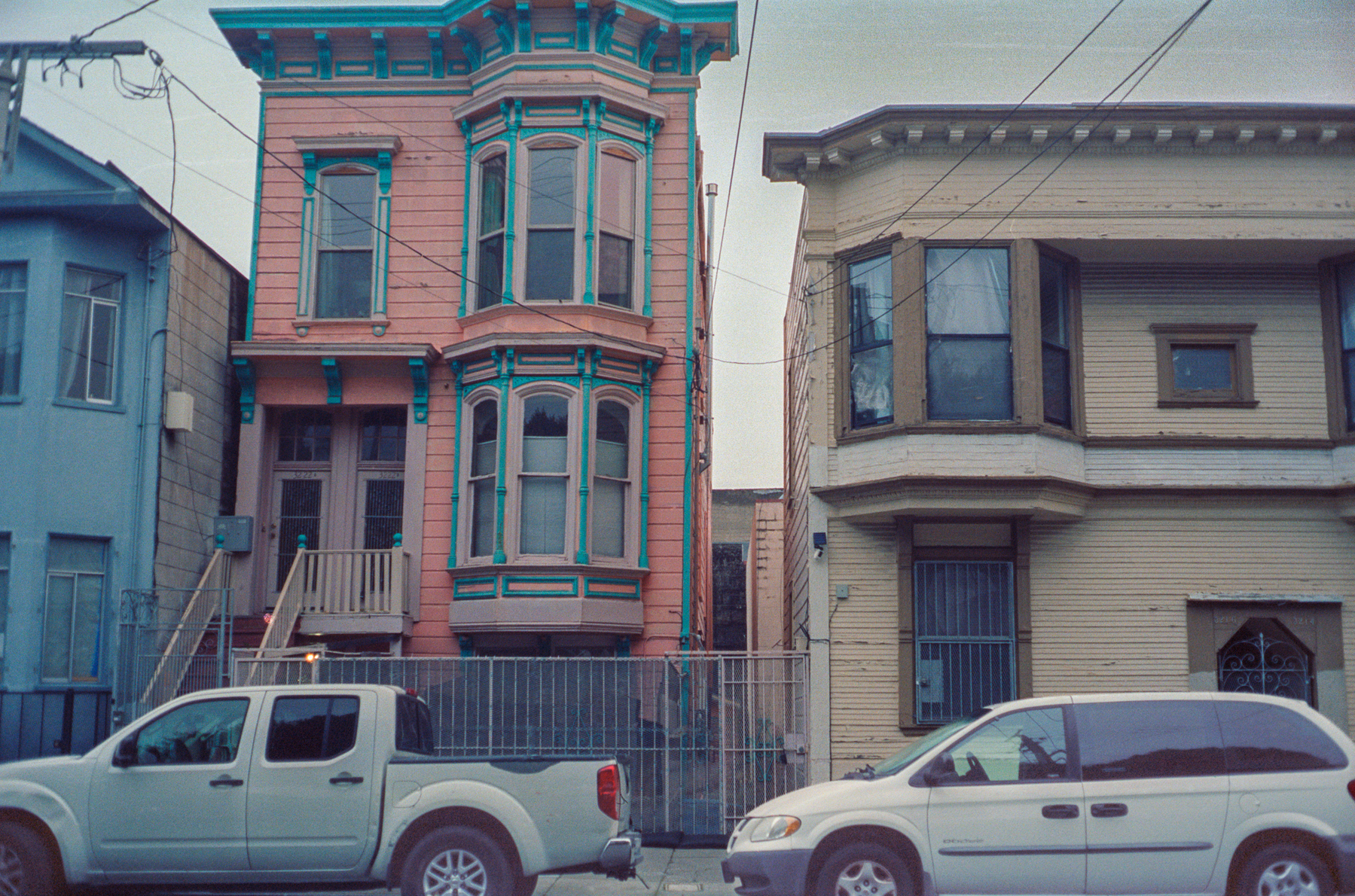
Pink and yellow.
All photos taken on Minolta Hi-Matic, Kodak Vision 3 500T film, developed and scanned by Eureka Film Lab.
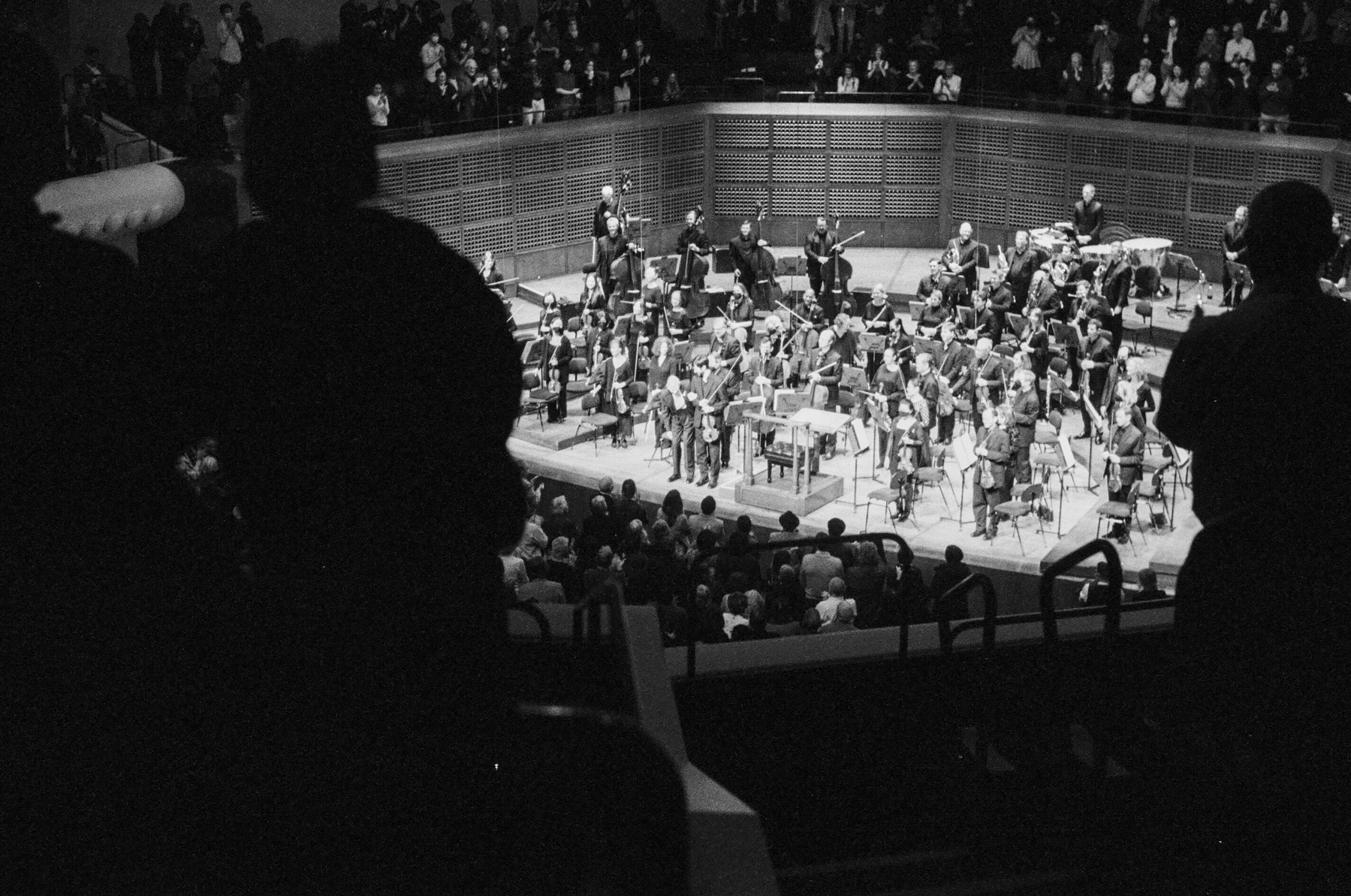
Photo taken on Leica M3, 50mm Summilux, Kodak T-Max P3200, developed and scanned by Underdog Film Lab, Oakland.
One of the joys of living in downtown San Francisco is how I can get to many cultural events with a 10 minute walk. Some nights it's jazz at SFJazz, others it's at the opera or symphony. Many rock and punk (even Balkan music!) shows within walking or transit distance, too! Even though many artists have been priced out of San Francisco, many cornerstone and higher prestige shows still remain here at the downtown venues. I do find myself popping over to Oakland for more hiphop and even folk music, though. That stuff is barely in San Francisco anymore.
I brought my Leica M3 and 50mm Summilux to the SF Symphony to watch Herbert Blomstedt conduct Dvořák’s Eighth Symphony. With high ISO film (T-Max P3200) of course. The Leica was very silent, though of course I didn't take photos while the orchestra was playing. It was also my first time shooting T-Max P3200 indoors in a dim setting. I like this photo, and want to keep documenting the music I go to see.
The Tenderloin neighborhood of San Francisco frequently gets a bad rep, but I could not live anywhere else in this city. I live on a block where I get to speak my first language, the Teochew / Chiu Chow dialect of Chaoshan, with all of the Southeast Asian Chinese people here who own restaurants, grocery stores, and who mostly settled here after the Vietnam War.
Being in community and surrounded by the intimacy of language and culture has given me a different perspective on this part of town.
My photographs will often reflect this, and here I really like these half frame photos I took around here with my Kodak H35 toy camera.
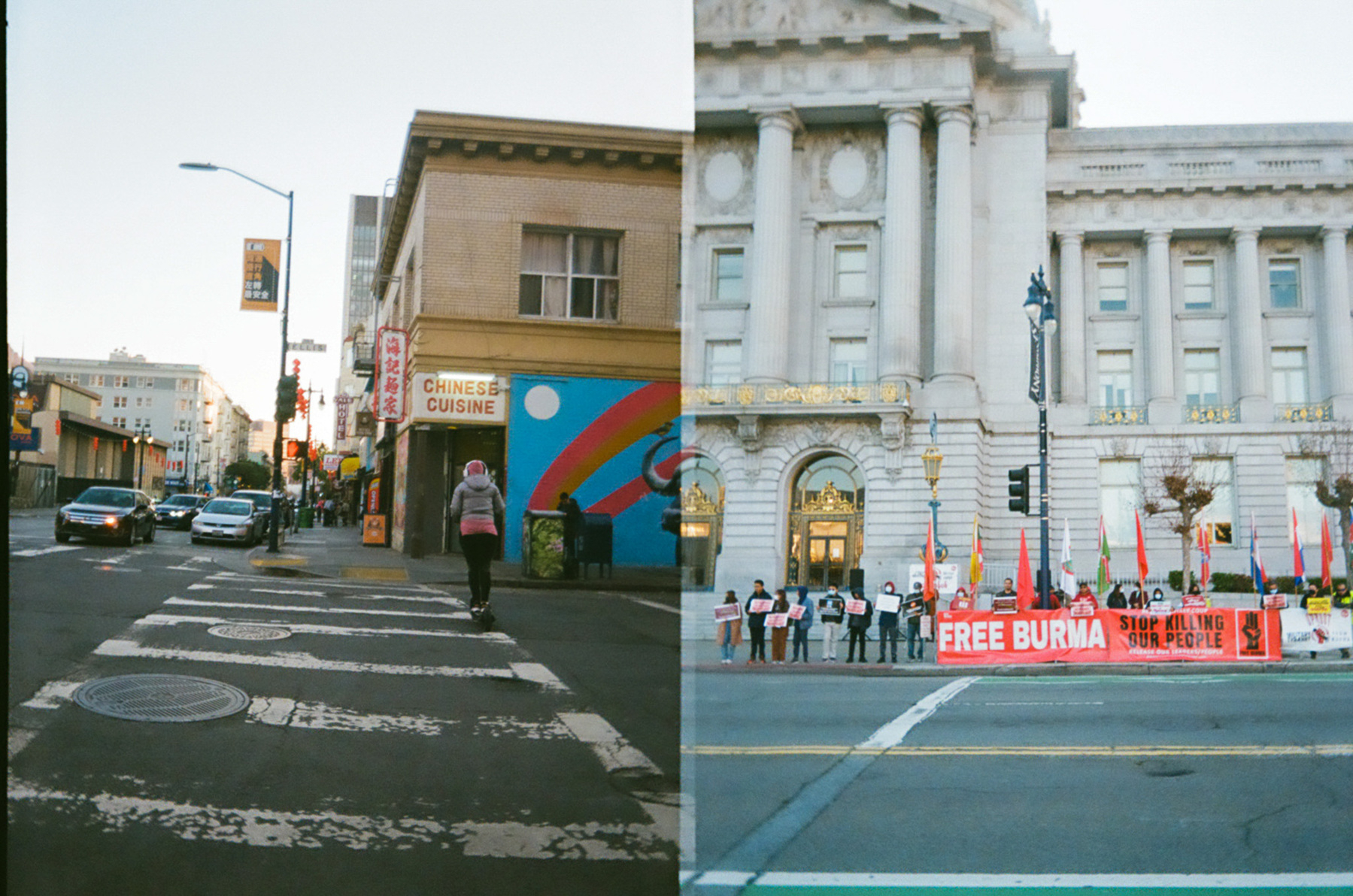
The Burmese community comes out to City Hall often to advocate for help for their country.
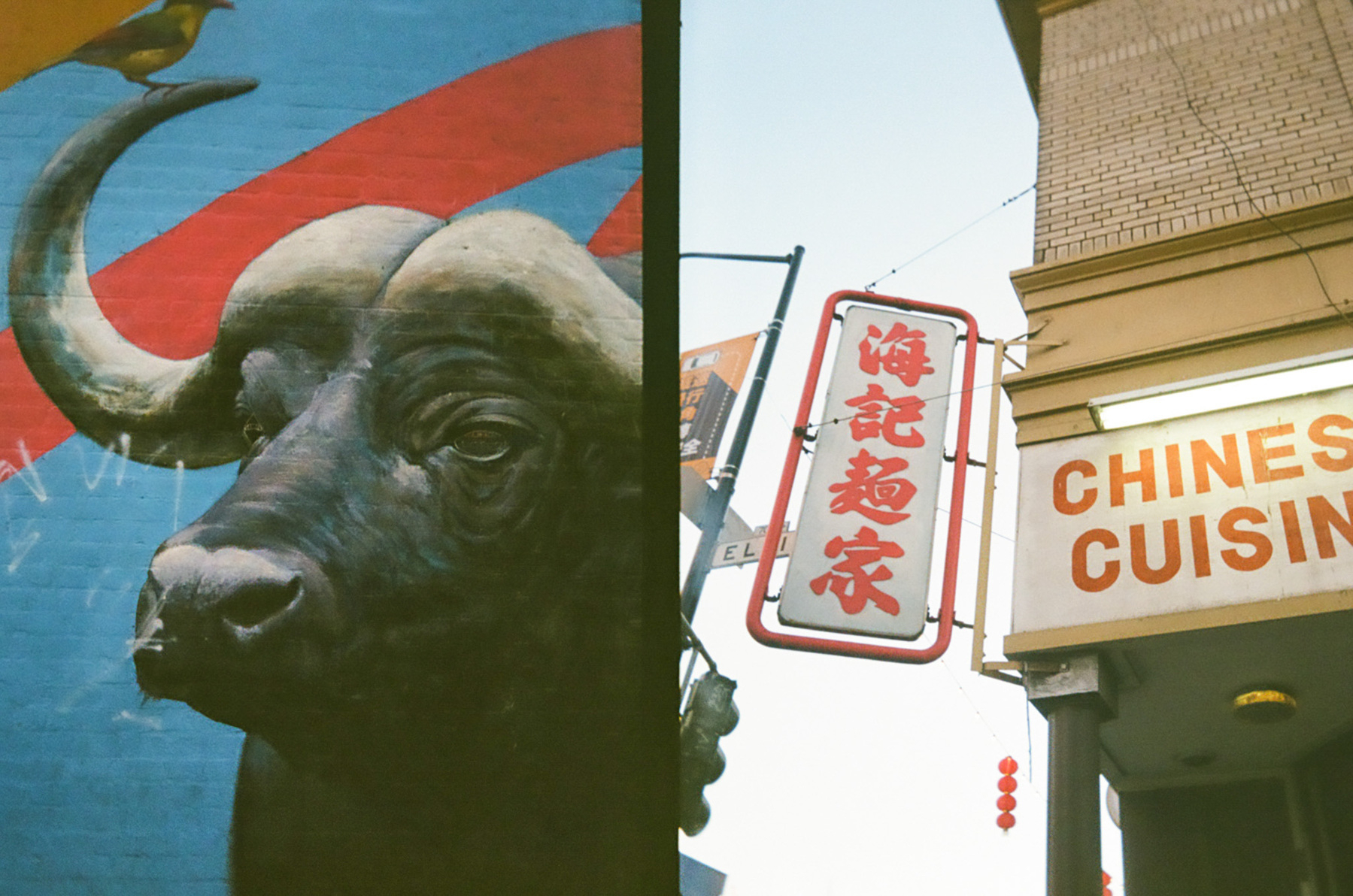
The people who run this noodle shop not only sound exactly like my grandparents, they also make food like my grandparents'.
Photos shot on a Kodak H35 half frame toy camera and processed at Photo Plus, San Francisco, then lightly edited by me for color and contrast
6 posts tagged "kodak"